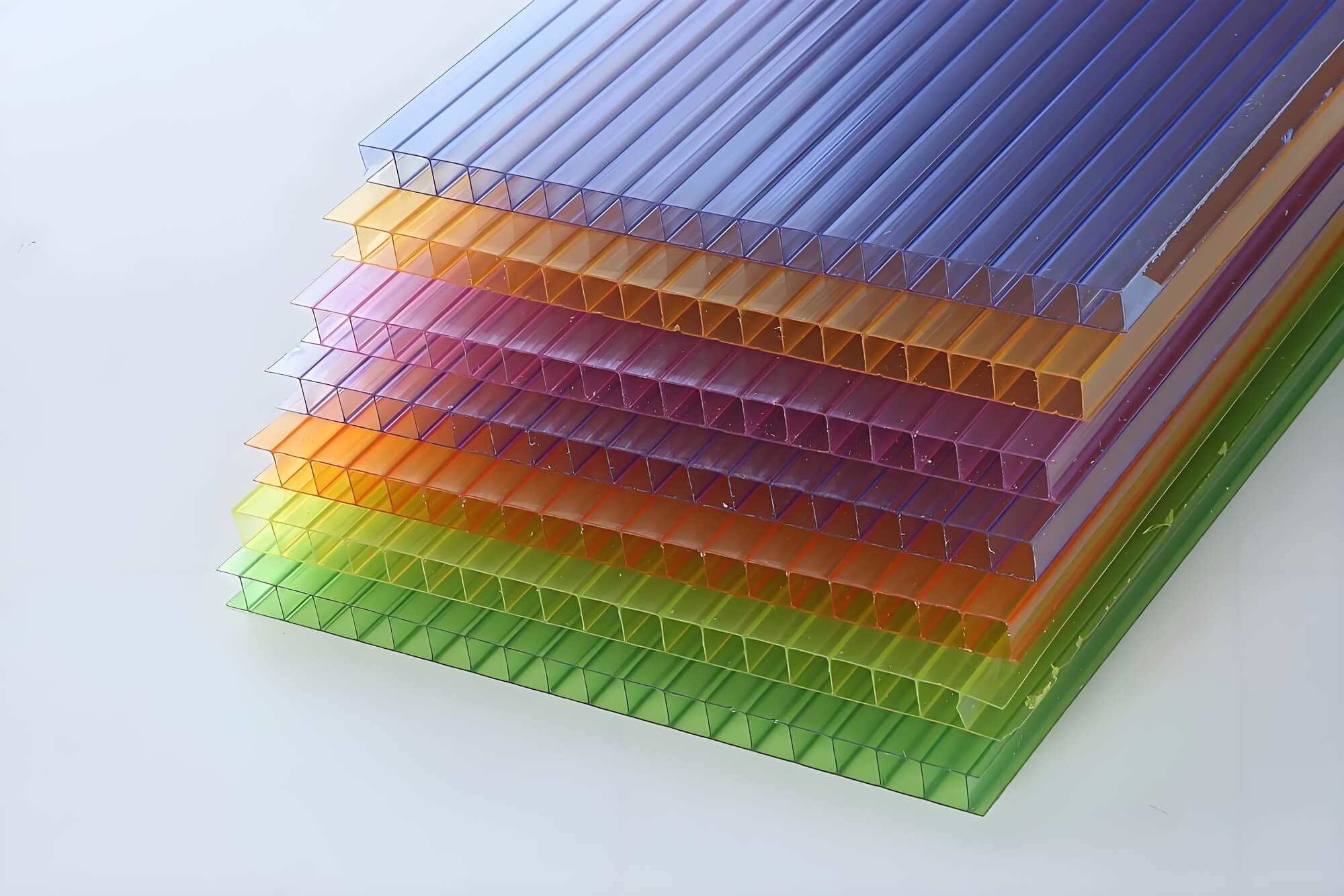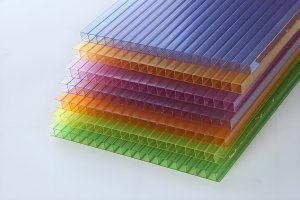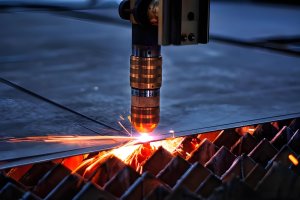In CNC machining, selecting the right polymer for precision components is a pivotal decision that defines performance, durability, and manufacturability. The choice between Thermoplastic vs. Thermoset is especially critical, as their molecular structures drive distinct behaviors under heat, stress, and chemical exposure. With over a decade of experience in CNC machining, I’ve witnessed how this decision shapes outcomes, from prototyping to aerospace applications. This guide explores Thermoplastic vs. Thermoset, blending technical analysis with shop-floor insights to empower engineers and designers to make informed choices for their CNC machining projects.
Section 1: Molecular Foundations of Thermoplastic vs. Thermoset
The core difference in Thermoplastic vs. Thermoset lies in their molecular makeup, which dictates their suitability for CNC machining.
- 1Thermoplastics: Reversible, Flexible Chains
Thermoplastics feature linear polymer chains held by weak intermolecular forces. When heated, these chains slide, allowing the material to soften, melt, and be reshaped. Cooling solidifies the shape, enabling repeated remelting cycles. Early in my career, I machined ABS for a prototype enclosure; the ability to recycle scraps was a game-changer for cost-conscious projects. This recyclability makes Thermoplastic vs. Thermoset a key consideration for sustainable CNC machining.
- 2Thermosets: Rigid, Irreversible Networks
Thermosets undergo curing, forming a rigid, three-dimensional network of covalent bonds. Once cured, they resist melting, maintaining stability until they degrade at extreme temperatures. I once machined G-10 for an aerospace antenna housing; its unyielding structure held tight tolerances but required diamond tools due to abrasiveness. This permanence positions Thermoplastic vs. Thermoset as critical for high-heat applications in CNC machining.
- 3Core Differences in Thermoplastic vs. Thermoset
The molecular structure of Thermoplastic vs. Thermoset underpins their performance. Table 1, a tool I often use to advise clients, summarizes these distinctions.Table 1: Fundamental Comparison of Thermoplastic vs. Thermoset
| Feature | Thermoplastics | Thermosets |
| Molecular Structure | Linear chains, weak bonds | Cross-linked 3D network, covalent bonds |
| Behavior Under Heat | Melt when heated; reversible | Remain rigid; degrade at high temperatures |
| Manufacturing Process | Addition polymerization; no chemical bonding | Condensation polymerization; irreversible curing |
| Recyclability | Highly recyclable | Not recyclable through melting |
| General Hardness | Flexible, tough | Hard, brittle |
| Machining Form | Solid pellets or stock shapes | Pre-cured solid stock or composites |
Section 2: Performance Analysis: Thermoplastic vs. ThermosetChoosing
Thermoplastic vs. Thermoset in CNC machining involves weighing performance against cost and sustainability. My experience on diverse projects highlights their strengths.
- Mechanical Properties: Thermosets offer high tensile strength and rigidity, ideal for structural components. Machining phenolic G-10 for a circuit board fixture, I valued its stiffness under load. Thermoplastics, like nylon used for automotive gears, excel in toughness, absorbing impacts without fracturing. The Thermoplastic vs. Thermoset trade-off balances rigidity and resilience.
- Thermal Stability: Thermosets shine in high-heat environments. I machined polyimide seals for aerospace, marveling at their stability at 280°C. Thermoplastics like ABS soften near 88°C, limiting their thermal range. This makes Thermoplastic vs. Thermoset crucial for heat-intensive CNC machining.
- Chemical Resistance: Thermosets resist a wide range of chemicals. I’ve seen epoxy composites endure harsh solvents in chemical plants. Some thermoplastics, like HDPE, match this resistance, but others falter. Testing is key to align Thermoplastic vs. Thermoset with chemical exposure needs.
- Economic & Environmental Impact: Thermoplastics’ recyclability reduces waste. I’ve reused PEEK scraps to cut costs, a practice that aligns with green manufacturing. Thermosets, non-recyclable and abrasive, increase tool wear expenses. Thermoplastic vs. Thermoset decisions thus weigh sustainability and machining costs.
Section 3: CNC Machining Strategies for Thermoplastic vs. Thermoset
CNC machining of Thermoplastic vs. Thermoset demands tailored approaches to address their unique properties.
3.1 Machining Thermoplastics: Controlling Heat Buildup
Thermoplastics’ low thermal conductivity traps heat at the tool, risking melting and poor precision. Early on, I ruined a polycarbonate part with slow feeds, causing a sticky mess. Now, I use sharp tools, high cutting speeds, and moderate feeds to produce thick chips that dissipate heat. Cooling with air or compatible liquids prevents stress cracks, ensuring accuracy in Thermoplastic vs. Thermoset machining.
3.2 Machining Thermosets: Battling Abrasion
Thermosets, especially composites, are abrasive, shredding standard tools. Machining G-10 for electronics, I switched to diamond-coated carbide tools for durability. Their brittleness demands rigid fixturing to avoid chipping, and the fine dust they produce requires robust extraction systems for safety. These factors set Thermoplastic vs. Thermoset apart in CNC machining challenges.
Section 4: Material Profiles for CNC Machining
Specific polymers illustrate the Thermoplastic vs. Thermoset decision in CNC machining, informed by my hands-on experience.
4.1 Key Thermoplastics
- PEEK: Offers unmatched strength and thermal stability up to 250°C. Machining PEEK for medical implants, I was impressed by its performance, though its cost requires careful budgeting.
- Acetal (POM): A machinist’s favorite for its stiffness and ease of cutting, ideal for precision gears and bearings in automotive applications.
- Polycarbonate: Its clarity and impact resistance suit safety shields. I crafted a machine guard that withstood heavy impacts without a scratch.
- Nylon: Tough and wear-resistant, but moisture absorption can affect dimensions. I’ve learned to adjust for humidity in critical applications.
- ABS: Cost-effective and easy to machine, perfect for prototypes like enclosures I’ve built for quick-turnaround projects.
- HDPE: Chemically resistant and budget-friendly, used for tanks and fluid systems in industrial settings.
4.2 Key Thermosets
- Phenolics (G-10/FR-4): Heat-resistant and insulating, ideal for PCBs. Machining these requires patience due to dust and tool wear.
- Epoxy Resins: Provide rigidity and chemical resistance in composites, used for high-strength structural parts.
- Polyimides (Vespel®): Excel in extreme heat, perfect for aerospace seals. Their cost is high, but performance is unmatched.
4.3 Material Properties and Machinability
Table 2 compares Thermoplastic vs. Thermoset polymers, a resource I rely on to guide material selection in CNC machining.Table 2: Properties of Common CNC Polymers
| Material | Type | Tensile Strength (MPa) | Heat Deflection Temp. (°C @ 1.8 MPa) | Chemical Resistance | Machinability Score (1-10) | Relative Cost | Key Applications |
| ABS | Thermoplastic | 40-50 | ~88 | Poor | 9 | $ | Prototypes, Enclosures |
| HDPE | Thermoplastic | 25-30 | ~46 | Excellent | 8 | $ | Tanks, Pipes |
| Nylon 6/6 | Thermoplastic | 80-85 | ~90-100 | Good | 7 | $$ | Gears, Bushings |
| Acetal (POM) | Thermoplastic | 65-75 | ~110 | Good | 10 | $$ | Bearings, Valves |
| Polycarbonate | Thermoplastic | 60-65 | ~130 | Fair | 8 | $$$ | Guards, Lenses |
| PEEK | Thermoplastic | 90-100 | ~150 | Excellent | 9 | $$$$$ | Aerospace, Medical |
| Phenolic G-10/FR4 | Thermoset | 240-310 | ~200+ | Excellent | 4 | $$$ | PCBs, Insulators |
| Polyimide (Vespel®) | Thermoset | ~80-100 | ~280+ | Excellent | 3 | $$$$$ | High-Temp Seals |
Section 5: Decision Framework for Thermoplastic vs. Thermoset
Selecting Thermoplastic vs. Thermoset in CNC machining requires evaluating thermal, mechanical, chemical, and cost factors. Thermosets excel in high-heat, high-load applications, like G-10 antenna housings I machined for aerospace stability. Thermoplastics, such as PEEK for lightweight brackets, offer flexibility and recyclability. In medical devices, polycarbonate ensures toughness for housings, while silicone thermoset seals withstand sterilization. Table 2 is my go-to tool for aligning Thermoplastic vs. Thermoset with project needs.
Section 6: Lessons from the Shop Floor
My years in CNC machining have taught me that Thermoplastic vs. Thermoset decisions go beyond specs—they require context. For an automotive project, I chose nylon for its wear resistance but had to tweak parameters to account for moisture absorption, ensuring tight tolerances. Another time, machining polyimide for a semiconductor client, I was struck by its heat resistance but challenged by tool wear. These experiences highlight the need for real-world testing. Collaborating with clients, I simulate machining conditions to validate Thermoplastic vs. Thermoset choices, ensuring parts perform as intended.
Conclusion
The Thermoplastic vs. Thermoset decision is the bedrock of successful CNC machining. Thermoplastics offer versatility, toughness, and recyclability, ideal for dynamic applications but limited by heat sensitivity. Thermosets provide superior strength, thermal stability, and chemical resistance, though their brittleness and non-recyclability pose challenges. My experience underscores the importance of analyzing application needs with tools like Table 2. For precision components that excel, partner with experts at Want.Net to navigate Thermoplastic vs. Thermoset and optimize your CNC machining projects.
FAQ:
1. What is the main difference between Thermoplastic vs. Thermoset in CNC machining?
The primary difference in Thermoplastic vs. Thermoset lies in their molecular structure. Thermoplastics have linear chains that melt and reshape when heated, making them recyclable and easier to machine. Thermosets form a rigid, cross-linked network during curing, resisting melting and offering superior heat and chemical resistance. In CNC machining, thermoplastics require heat management, while thermosets demand abrasion-resistant tools.
2. Which material is better for high-temperature applications in CNC machining?
Thermosets are typically better for high-temperature applications in CNC machining. Their cross-linked structure maintains stability at elevated temperatures, like polyimide at 280°C. Thermoplastics, such as ABS, soften at lower temperatures (e.g., 88°C). For heat-intensive projects, Thermoplastic vs. Thermoset often favors thermosets, as I’ve seen in aerospace seal machining.
3. How does CNC machining differ for Thermoplastic vs. Thermoset?
CNC machining of thermoplastics focuses on heat control to prevent melting, using sharp tools and high cutting speeds. Thermosets, being abrasive, require diamond-coated tools and rigid fixturing to avoid chipping. Dust extraction is critical for thermosets due to hazardous particles. The Thermoplastic vs. Thermoset distinction shapes tooling and process strategies.
4. Are thermoplastics more cost-effective than thermosets in CNC machining?
Thermoplastics are often more cost-effective due to their recyclability and lower tooling wear. For example, machining ABS is budget-friendly and generates reusable scraps. Thermosets, like G-10, increase costs due to abrasive wear on tools. However, Thermoplastic vs. Thermoset cost depends on application demands and production scale.
5. Can thermoplastics and thermosets be recycled after CNC machining?
Thermoplastics are highly recyclable, as their reversible structure allows remelting. I’ve recycled PEEK scraps to reduce waste in CNC machining projects. Thermosets, with their permanent bonds, cannot be remelted, making recycling challenging. This sustainability factor is a key Thermoplastic vs. Thermoset consideration.
6. Which polymers are easiest to machine in CNC machining?
Acetal (POM) and ABS, both thermoplastics, are among the easiest to machine due to their low melting points and minimal tool wear, earning high machinability scores (9-10). Thermosets like polyimide are tougher, scoring low (3-4) due to abrasiveness. Thermoplastic vs. Thermoset machinability varies by material, as shown in Table 2.
Reference:
https://en.wikipedia.org/wiki/Thermoplastic
https://en.wikipedia.org/wiki/Thermosetting_polymer
https://www.linkedin.com/pulse/uses-applications-thermosetting-plastics-jay-griffin
https://www.askdifference.com/thermoplastic-vs-thermoset/
Other Articles You Might Enjoy
- Thermoset vs Thermoplastic Who Dominates CNC Machining
Introduction In the world of manufacturing, especially for buyers looking to source plastic components, material selection is crucial. Two types of plastics dominate the discussion: thermoset and thermoplastic. These materials,…
- Understanding Thermoplastic vs Thermoset for Industrial Applications
Introduction to Thermoplastics and Thermosets As someone who’s spent years working with materials in manufacturing, I've seen firsthand how choosing the right type of plastic impacts both the manufacturing process…
- Thermoset vs Thermoplastic Who Dominates CNC Machining
Introduction In the world of manufacturing, especially for buyers looking to source plastic components, material selection is crucial. Two types of plastics dominate the discussion: thermoset and thermoplastic. These materials,…
- TPE Material: The Ultimate Guide to Flexible, Durable And Recyclable Elastomers
Introduction: What Is TPE Material? I remember the first time I came across TPE material. Someone handed me a flexible grip cover for a tool handle, and I noticed how…






